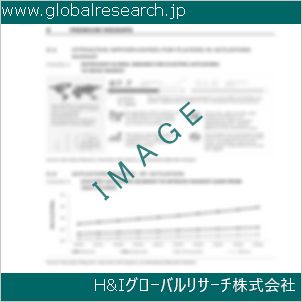Table of Contents
1 Industry Overview of Antioxidant A
1.1 Definition and Specifications of Antioxidant A
1.1.1 Definition of Antioxidant A
1.1.2 Specifications of Antioxidant A
1.2 Classification of Antioxidant A
1.3 Applications of Antioxidant A
1.3.1 Nuclear Application
1.3.2 Non-Nuclear Application
1.4 Industry Chain Structure of Antioxidant A
1.5 Industry Overview and Major Regions Status of Antioxidant A
1.5.1 Industry Overview of Antioxidant A
1.5.2 Global Major Regions Status of Antioxidant A
1.6 Industry Policy Analysis of Antioxidant A
1.7 Industry News Analysis of Antioxidant A
2 Manufacturing Cost Structure Analysis of Antioxidant A
2.1 Raw Material Suppliers and Price Analysis of Antioxidant A
2.2 Equipment Suppliers and Price Analysis of Antioxidant A
2.3 Labor Cost Analysis of Antioxidant A
2.4 Other Costs Analysis of Antioxidant A
2.5 Manufacturing Cost Structure Analysis of Antioxidant A
2.6 Manufacturing Process Analysis of Antioxidant A
3 Technical Data and Manufacturing Plants Analysis of Antioxidant A
3.1 Capacity and Commercial Production Date of Global Antioxidant A Major Manufacturers in 2023
3.2 Manufacturing Plants Distribution of Global Antioxidant A Major Manufacturers in 2023
3.3 R&D Status and Technology Source of Global Antioxidant A Major Manufacturers in 2023
3.4 Raw Materials Sources Analysis of Global Antioxidant A Major Manufacturers in 2023
4 Capacity, Production and Revenue Analysis of Antioxidant A by Regions, Types and Manufacturers
4.1 Global Capacity, Production and Revenue of Antioxidant A by Regions 2019-2024
4.2 Global and Major Regions Capacity, Production, Revenue and Growth Rate of Antioxidant A 2019-2024
4.3 Global Capacity, Production and Revenue of Antioxidant A by Types 2019-2024
4.4 Global Capacity, Production and Revenue of Antioxidant A by Manufacturers 2019-2024
5 Price, Cost, Gross and Gross Margin Analysis of Antioxidant A by Regions, Types and Manufacturers
5.1 Price, Cost, Gross and Gross Margin Analysis of Antioxidant A by Regions 2019-2024
5.2 Price, Cost, Gross and Gross Margin Analysis of Antioxidant A by Types 2019-2024
5.3 Price, Cost, Gross and Gross Margin Analysis of Antioxidant A by Manufacturers 2019-2024
6 Consumption Volume, Consumption Value and Sale Price Analysis of Antioxidant A by Regions, Types and Applications
6.1 Global Consumption Volume and Consumption Value of Antioxidant A by Regions 2019-2024
6.2 Global and Major Regions Consumption Volume, Consumption Value and Growth Rate of Antioxidant A 2019-2024
6.3 Global Consumption Volume and Consumption Value of Antioxidant A by Types 2019-2024
6.4 Global Consumption Volume and Consumption Value of Antioxidant A by Applications 2019-2024
6.5 Sale Price of Antioxidant A by Regions 2019-2024
6.6 Sale Price of Antioxidant A by Types 2019-2024
6.7 Sale Price of Antioxidant A by Applications 2019-2024
6.8 Market Share Analysis of Antioxidant A by Different Sale Price Levels
7 Supply, Import, Export and Consumption Analysis of Antioxidant A
7.1 Supply, Consumption and Gap of Antioxidant A 2019-2024
7.2 Global Capacity, Production, Price, Cost, Revenue, Supply, Import, Export and Consumption of Antioxidant A 2019-2024
7.3 USA Capacity, Production, Price, Cost, Revenue, Supply, Import, Export and Consumption of Antioxidant A 2019-2024
7.4 EU Capacity, Production, Price, Cost, Revenue, Supply, Import, Export and Consumption of Antioxidant A 2019-2024
7.5 China Capacity, Production, Price, Cost, Revenue, Supply, Import, Export and Consumption of Antioxidant A 2019-2024
7.6 Japan Capacity, Production, Price, Cost, Revenue, Supply, Import, Export and Consumption of Antioxidant A 2019-2024
8 Major Manufacturers Analysis of Antioxidant A
8.1 Manufacturer One
8.1.1 Company Profile
8.1.2 Product Picture and Specifications
8.1.2.1 Type I
8.1.2.2 Type II
8.1.2.3 Type III
8.1.3 Capacity, Production, Price, Cost, Gross and Revenue
8.1.4 Contact Information
8.2 Manufacturer Two
8.2.1 Company Profile
8.2.2 Product Picture and Specifications
8.2.2.1 Type I
8.2.2.2 Type II
8.2.2.3 Type III
8.2.3 Capacity, Production, Price, Cost, Gross and Revenue
8.2.4 Contact Information
8.3 Manufacturer Three
8.3.1 Company Profile
8.3.2 Product Picture and Specifications
8.3.2.1 Type I
8.3.2.2 Type II
8.3.2.3 Type III
8.3.3 Capacity, Production, Price, Cost, Gross and Revenue
8.3.4 Contact Information
8.4 Manufacturer Four
8.4.1 Company Profile
8.4.2 Product Picture and Specifications
8.4.2.1 Type I
8.4.2.2 Type II
8.4.2.3 Type III
8.4.3 Capacity, Production, Price, Cost, Gross and Revenue
8.4.4 Contact Information
8.5 Manufacturer Five
8.5.1 Company Profile
8.5.2 Product Picture and Specifications
8.5.2.1 Type I
8.5.2.2 Type II
8.5.2.3 Type III
8.5.3 Capacity, Production, Price, Cost, Gross and Revenue
8.5.4 Contact Information
…
9 Marketing Trader or Distributor Analysis of Antioxidant A
9.1 Marketing Channels Status of Antioxidant A
9.2 Traders or Distributors with Contact Information of Antioxidant A by Regions
9.3 Ex-work Price, Channel Price and End Buyer Price Analysis of Antioxidant A
9.4 Regional Import, Export and Trade Analysis of Antioxidant A
10 Industry Chain Analysis of Antioxidant A
10.1 Upstream Major Raw Materials Suppliers Analysis of Antioxidant A
10.1.1 Major Raw Materials Suppliers with Contact Information Analysis of Antioxidant A
10.1.2 Major Raw Materials Suppliers with Supply Volume Analysis of Antioxidant A by Regions
10.2 Upstream Major Equipment Suppliers Analysis of Antioxidant A
10.2.1 Major Equipment Suppliers with Contact Information Analysis of Antioxidant A
10.2.2 Major Equipment Suppliers with Product Pictures Analysis of Antioxidant A by Regions
10.3 Downstream Major Consumers Analysis of Antioxidant A
10.3.1 Major Consumers with Contact Information Analysis of Antioxidant A
10.3.2 Major Consumers with Consumption Volume Analysis of Antioxidant A by Regions
10.4 Supply Chain Relationship Analysis of Antioxidant A
11 Development Trend of Analysis of Antioxidant A
11.1 Capacity, Production and Revenue Forecast of Antioxidant A by Regions and Types
11.1.1 Global Capacity, Production and Revenue of Antioxidant A by Regions 2024-2029
11.1.2 Global and Major Regions Capacity, Production, Revenue and Growth Rate of Antioxidant A 2024-2029
11.1.3 Global Capacity, Production and Revenue of Antioxidant A by Types 2024-2029
11.2 Consumption Volume and Consumption Value Forecast of Antioxidant A by Regions, Types and Applications
11.2.1 Global Consumption Volume and Consumption Value of Antioxidant A by Regions 2024-2029
11.2.2 Global and Major Regions Consumption Volume, Consumption Value and Growth Rate of Antioxidant A 2024-2029
11.2.3 Global Consumption Volume and Consumption Value of Antioxidant A by Types 2024-2029
11.2.4 Global Consumption Volume and Consumption Value of Antioxidant A by Applications 2024-2029
11.3 Supply, Import, Export and Consumption Forecast of Antioxidant A
11.3.1 Supply, Consumption and Gap of Antioxidant A 2024-2029
11.3.2 Global Capacity, Production, Price, Cost, Revenue, Supply, Import, Export and Consumption of Antioxidant A 2024-2029
11.3.3 USA Capacity, Production, Price, Cost, Revenue, Supply, Import, Export and Consumption of Antioxidant A 2024-2029
11.3.4 EU Capacity, Production, Price, Cost, Revenue, Supply, Import, Export and Consumption of Antioxidant A 2024-2029
11.3.5 China Capacity, Production, Price, Cost, Revenue, Supply, Import, Export and Consumption of Antioxidant A 2024-2029
11.3.6 Japan Capacity, Production, Price, Cost, Revenue, Supply, Import, Export and Consumption of Antioxidant A 2024-2029
12 New Project Investment Feasibility Analysis of Antioxidant A
12.1 New Project SWOT Analysis of Antioxidant A
12.2 New Project Investment Feasibility Analysis of Antioxidant A
13 Conclusion of the Global Antioxidant A (CAS 90-30-2) Industry 2024 Market Research Report
| ※参考情報 抗酸化剤A(Antioxidant A、CAS 90-30-2)は、化学物質の一種であり、主に酸化防止剤として利用されています。その役割は、物質の酸化を抑制することにあり、特に食品や化粧品、プラスチックなどの産業において重要な機能を果たしています。酸化は、物質が酸素と反応して劣化したり、品質を損ねたりする現象であり、抗酸化剤はこの過程を防ぐ役割を持っています。 抗酸化剤Aは、特にその効果の広さと多様性から、多くの用途で用いられています。食品業界では、油脂や脂肪分が含まれる製品の酸化を防ぎ、風味や栄養価を維持するために添加されます。特に、動物性脂肪や植物油に含まれる不飽和脂肪酸は酸化に対して敏感であり、抗酸化剤Aの添加によってこれらの製品の保存期間を延ばすことが可能となります。 また、化粧品業界でも抗酸化剤Aは広く使われています。肌に対する酸化ストレスを軽減するため、多くのスキンケア製品やメイクアップ商品に含まれており、肌の老化を遅らせたり、ダメージから保護する役割を果たしています。これにより、消費者は若々しい肌を保つことができるのです。 抗酸化剤Aは、化学的にはフェノール類に属し、その構造においてヒドロキシル基を持つことが特徴です。このヒドロキシル基が、酸化反応を妨害し、他の物質との反応を防ぐ要因となります。具体的には、抗酸化剤Aは自由基と呼ばれる不安定な分子と反応し、それによって連鎖反応を抑制します。自由基は、通常、細胞やDNAに対してダメージを与える要因となるため、抗酸化剤の役割は非常に重要です。 種類としては、抗酸化剤は大きく分けて天然由来のものと合成されたものに分類されます。天然由来の抗酸化剤には、ビタミンCやビタミンE、ポリフェノール類などがあります。一方、合成抗酸化剤には、BHT(ブチルヒドロキシトルエン)やBHA(ブチルヒドロキシアニソール)、および本剤である抗酸化剤Aなどが含まれます。合成抗酸化剤は、一般的にコストが低く、安定性が高いため、広く使用される傾向にあります。 用途は多岐にわたり、食品、化粧品、医薬品、プラスチック、ゴム、コーティング材など、さまざまな製品に添加されています。このように、様々な分野で重要な役割を果たし、消費者に対して高品質の製品を提供するためには欠かせない存在となっています。 また、抗酸化剤Aはその効能だけでなく、安全性に関しても多くの研究が行われてきました。食品添加物としての使用においては、各国の規制機関によって厳しい基準が設けられており、許可を得た範囲内での使用が求められます。これにより、消費者は安全に抗酸化剤Aを含む製品を利用することができるのです。 最近では、環境への配慮から、より持続可能な製品の開発が進められています。そのため、抗酸化剤の選定においても、環境に優しい天然由来成分に対する関心が高まっています。たとえば、植物由来の抗酸化物質が注目を集めており、これらは食品業界だけでなく、化粧品や医療分野でも使用されるようになっています。 加えて、科学技術の進展により、抗酸化剤の機能を強化するための新しい合成方法やブレンド技術が開発されています。これにより、抗酸化剤Aの効果をさらに高めることが期待されており、今後の研究成果が待たれます。 以上のように、抗酸化剤Aは食品、化粧品、プラスチックなど多様な分野で重要な役割を担っており、今後もその需要が増えることが予想されます。持続可能な開発と環境保護が重視される中で、安全で効果的な抗酸化剤の開発が進むことを期待したいところです。 |
❖ 免責事項 ❖
http://www.globalresearch.jp/disclaimer


-gr.jpg)









